英仙座流星雨和一棵古老刺果松,大盆地国家公园,内华达州,美国 Perseid meteor shower and an ancient bristlecone pine, Great Basin National Park, Nevada (© Wirestock Creators/Shutterstock)
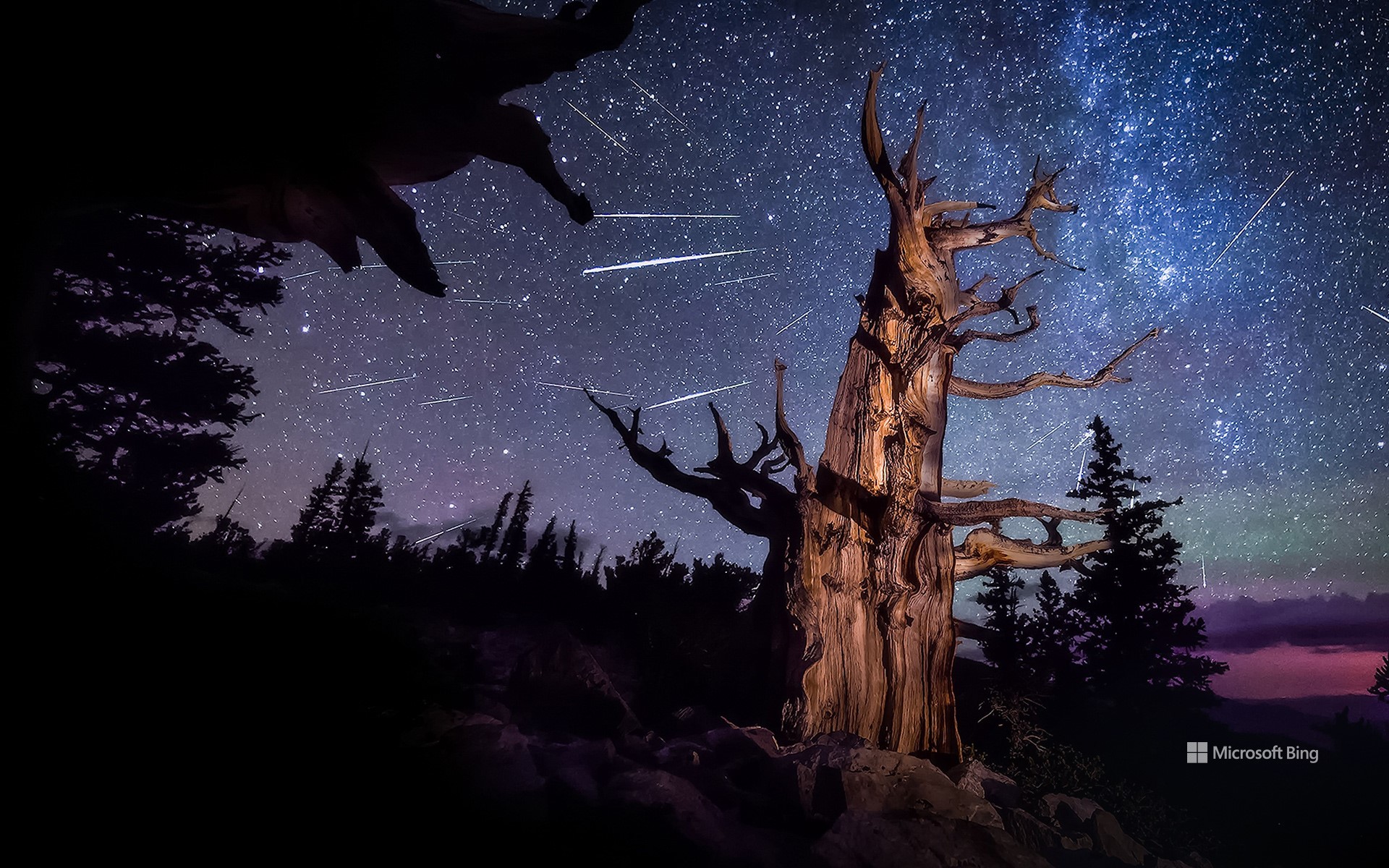
英仙座流星雨和一棵古老刺果松,大盆地国家公园,内华达州,美国 Perseid meteor shower and an ancient bristlecone pine, Great Basin National Park, Nevada (© Wirestock Creators/Shutterstock)
永恒的光芒 Timeless glow
英仙座流星雨照亮内华达
准备迎接一年中最耀眼的天文奇观之一英仙座流星雨吧!该流星雨每年活跃期为7月中旬至8月下旬,而今年的峰值将于8月12日夜间至13日凌晨上演璀璨盛景。当地球穿越彗星斯威夫特-塔特尔留下的冰岩碎片轨道时,形成了这一流星雨。这颗彗星上一次接近地球是在1992年。当这些尘埃颗粒以高速进入地球大气层时,会因摩擦而燃烧,划出一道道明亮的光痕。
若想尽情欣赏这场天文盛宴,北半球至中南纬度地区是最佳观测地点。今日图片所示地点为美国内华达州的大盆地国家公园。这里栖息着地球上最古老的非克隆植物狐尾松。这些树木在风雪与雨水的雕琢下,顽强生存了数千年,年复一年地守候着夜空中这场流星雨的盛会。
Perseid meteor shower over Nevada
Get ready for one of the most dazzling celestial displays of the year—the Perseid meteor shower. Active from mid-July through late August, this year it reaches its spectacular peak on the night of August 12 and into the early hours of August 13. The Perseids light up the skies when Earth passes through a trail of icy and rocky debris left behind by Comet Swift–Tuttle, which last passed close to our planet in 1992. These meteors are called the Perseids because they appear to streak from the direction of the constellation Perseus.
For those hoping to catch a glimpse of this breathtaking show, the Perseid meteor shower is best viewed from the Northern Hemisphere, extending down to the mid-southern latitudes. One such vantage point is Great Basin National Park in Nevada, seen in today's image, where ancient bristlecone pines stand beneath a sky ablaze with shooting stars. These remarkable trees are the oldest non-clonal species on Earth. Shaped by relentless wind, snow, and rain, they've endured for millennia—witnessing ice ages, volcanic eruptions, and the rise and fall of civilizations.
火浪岩层,火焰谷州立公园,内华达州,美国 The Fire Wave, a rock formation in Valley of Fire State Park, Nevada (© Clint Losee/Tandem Stills + Motion)
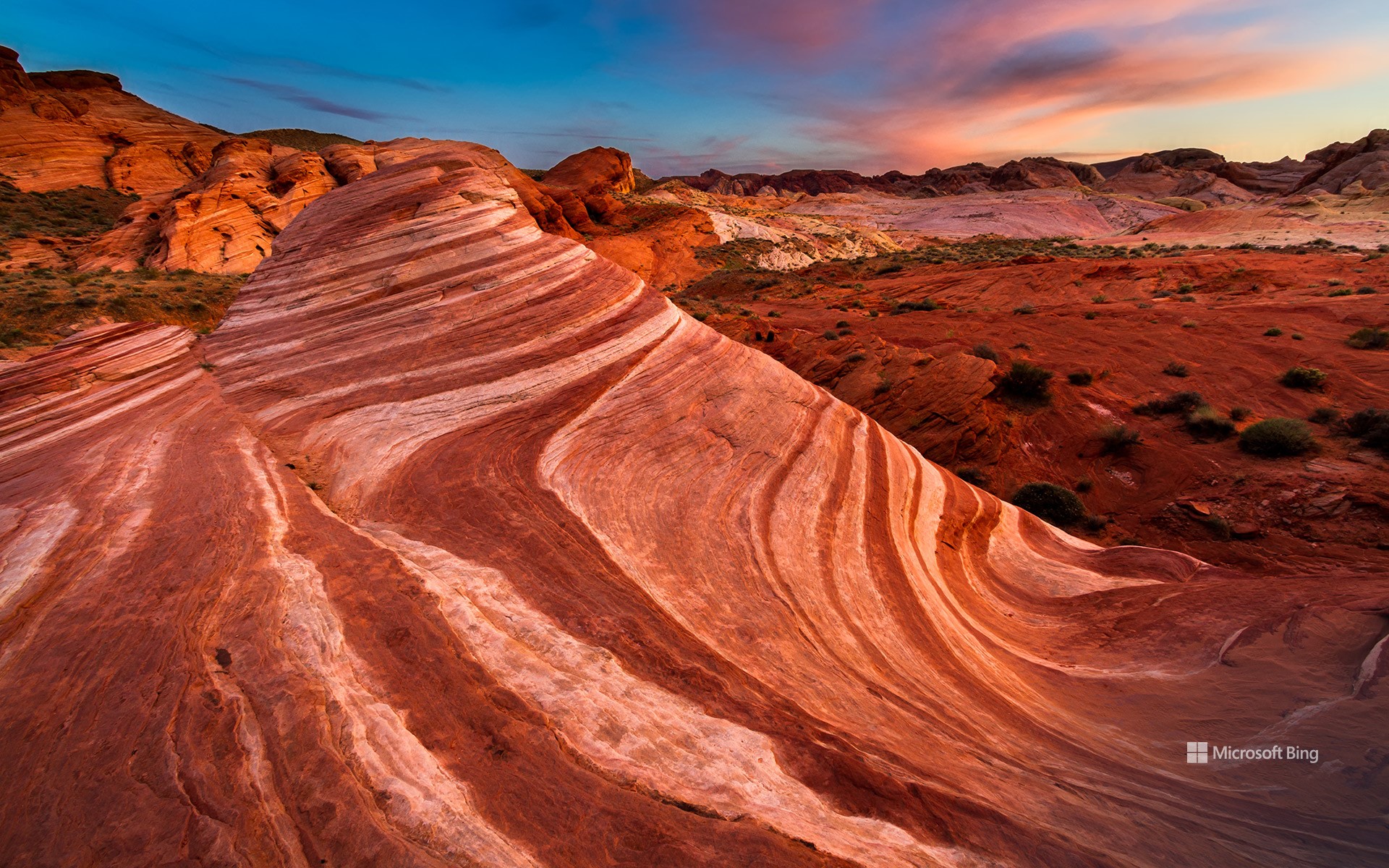
火浪岩层,火焰谷州立公园,内华达州,美国 The Fire Wave, a rock formation in Valley of Fire State Park, Nevada (© Clint Losee/Tandem Stills + Motion)
拍出炫酷照片的好地方 Hot spot for a cool photo
火焰谷州立公园,内华达州
在内华达州干旱广袤的莫哈维沙漠中,坐落着壮观的火焰谷州立公园。该公园占地46000英亩,得名于火红色的阿兹台克砂岩,这是一种侏罗纪早期的地质地层,由古老的沙丘组成。公园最大的亮点是“火浪”,这是一个地质奇观,表面有着红色、粉色和白色的条纹,看上去就像冰冻的波浪。
漫步在公园中,您将会看到神秘的岩画,这是一种在岩石表面刮刻而成的岩画,出自古普韦布洛人之手,他们是住在附近莫瓦帕山谷的农民。岩画上的内容,可能是古普韦布洛人在该地区进行狩猎和宗教仪式。如果您是历史爱好者,不妨尝试破解刻在岩壁上的神秘信息。穿上你的徒步鞋,向火焰谷州立公园出发吧!
Valley of Fire State Park, Nevada
Amid the arid expanse of the Mojave Desert in Nevada lies the natural grandeur of the Valley of Fire State Park. This park, which stretches across 46,000 acres, is named after the fiery red Aztec Sandstone, an Early Jurassic geological formation of made up of ancient sand dunes. The park's highlight, Fire Wave, is a geological marvel that appears like a frozen wave with its red, pink, and white stripes.
In the park, you will come across mysterious petroglyphs, rock carvings made by scratching on the rock's surface, left by the Ancestral Puebloans, who were farmers from the nearby Moapa Valley. It is likely they practiced hunting and performed religious ceremonies in this area. If you are a history buff, you might want to try and decode the cryptic messages carved on the rock faces. Well, put on your hiking shoes and get ready to wander, to wonder, and to witness the Valley of Fire State Park.
塔霍湖国家公园中的沙港,内华达州 Sand Harbor, Lake Tahoe Nevada State Park, Nevada (© Mariusz Blach/Getty Images Plus)
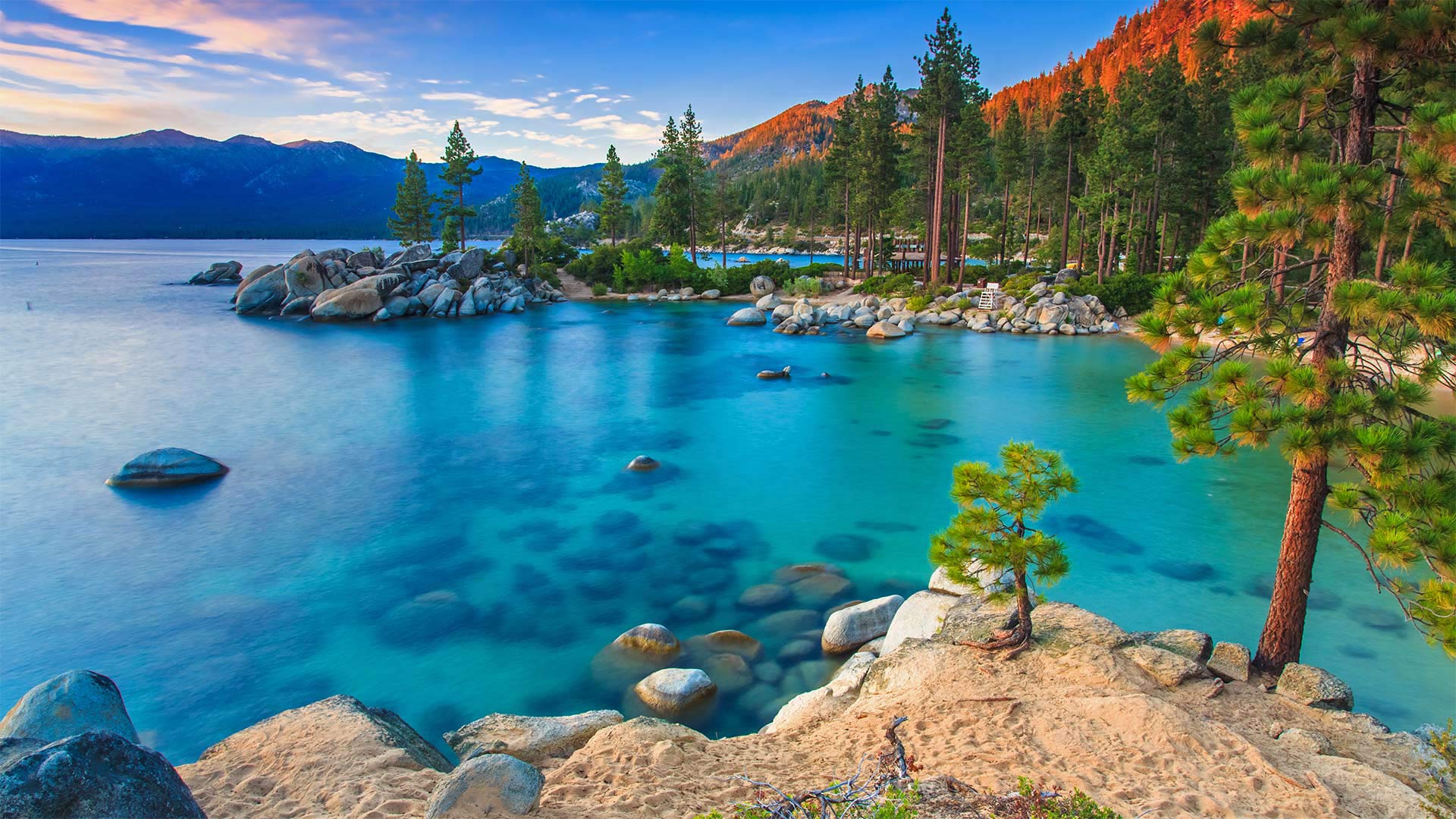
塔霍湖国家公园中的沙港,内华达州 Sand Harbor, Lake Tahoe Nevada State Park, Nevada (© Mariusz Blach/Getty Images Plus)
The Big Blue of the Sierras
High in the Sierra Nevada mountain range, straddling the border between Nevada and California, you'll find the largest alpine lake in North America, Lake Tahoe—sometimes called Big Blue. Seventy-two miles in circumference, with an average depth of 1,000 feet, it has the sixth-largest volume of any lake in the US—only the Great Lakes are larger. For at least 6,000 years, the territory of the Washoe people centered around Lake Tahoe, but the arrival of non-native people in the 19th century led to a series of armed conflicts and eventual loss of land to farms and townships.
The lake has a long history of disputes. Even its name wasn't formally agreed upon until 1945. Since the first European-American saw it in 1844, it has been called Lake Bonpland, Mountain Lake, Fremont's Lake, Fallen Leaf Lake, Maheon Lake, and Lake Bigler, after California's third governor and noted Confederate sympathizer, John Bigler. It was that name that Lake Tahoe finally supplanted on maps starting in 1862. But not everyone was enamored of the new moniker. Mark Twain famously criticized it as an 'unmusical cognomen' and that it should retain the name Bigler 'until some name less flat, insipid and spooney than Tahoe is invented for it.' Apparently, we're still waiting.
Cleveland Clinic Lou Ruvo Center for Brain Health in Las Vegas, Nevada (© Garry Belinsky/Offset)
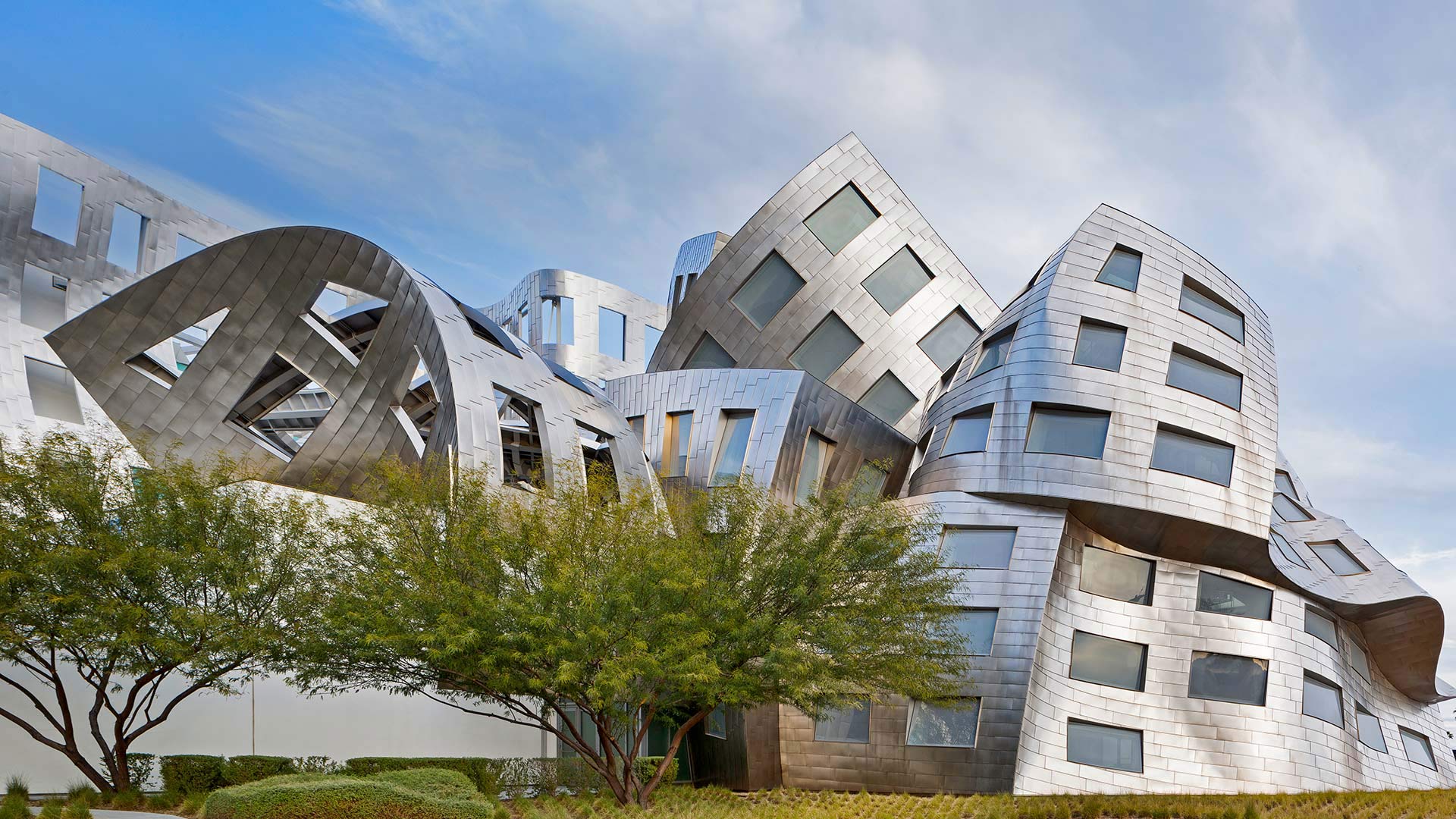
Cleveland Clinic Lou Ruvo Center for Brain Health in Las Vegas, Nevada (© Garry Belinsky/Offset)
From the mind of Frank Gehry
Today's image features the Cleveland Clinic Lou Ruvo Center for Brain Health in Las Vegas, designed by world-renowned architect Frank Gehry and his firm, Gehry Partners, in 2005. The building consists of three different elements: a medical building with spaces for patient care and research; the Life Activity Center, a for-hire event space which helps fund the center's research; and a breezeway connecting the two spaces. Some have likened these elements to the hemispheres of the brain itself, with the medical building representing rational thinking and the event space giving form to creative thinking.
Satellite image of the Burning Man Festival in Black Rock City, Nevada (© DigitalGlobe/ScapeWare3d/Getty Images)
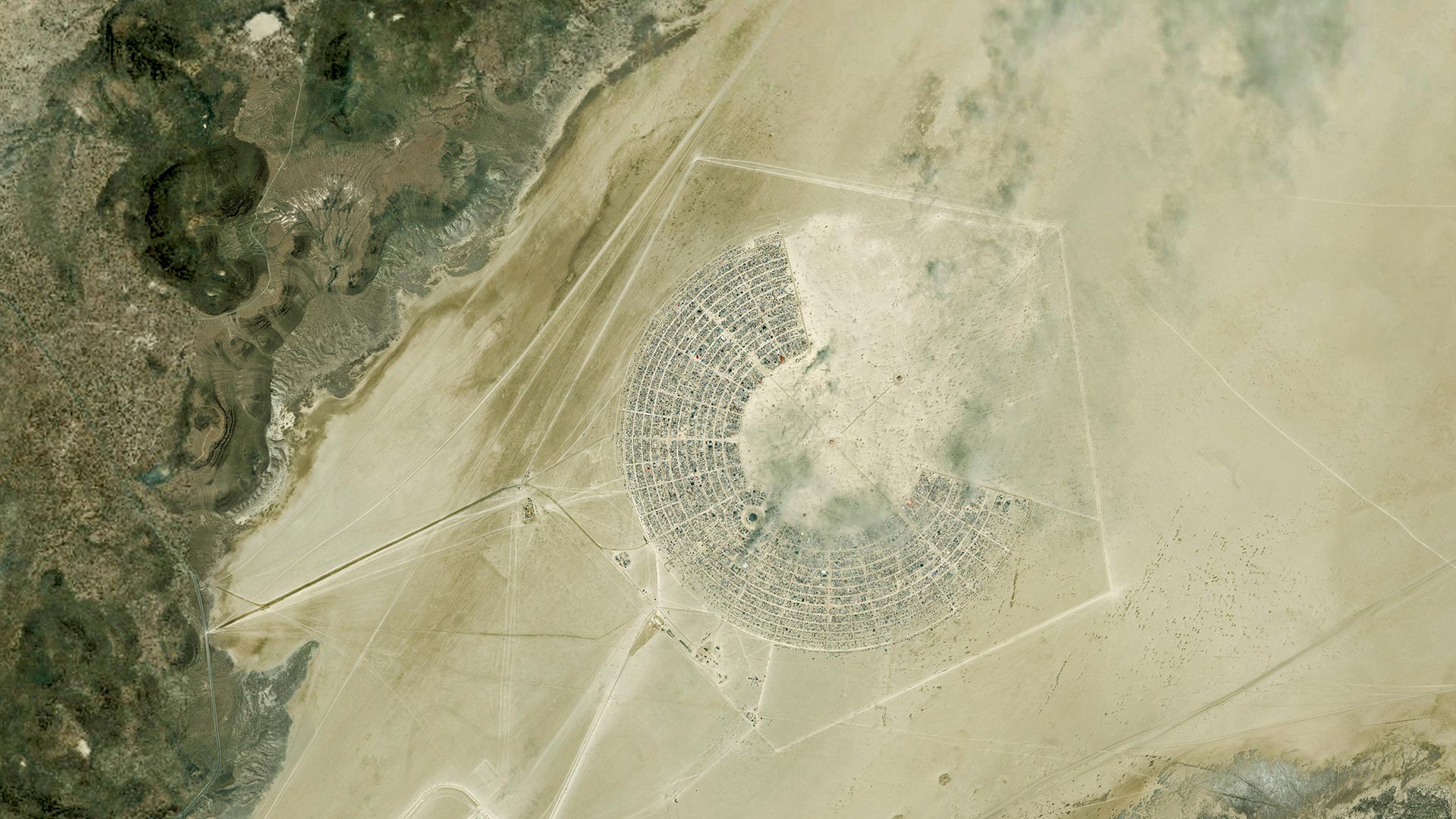
Satellite image of the Burning Man Festival in Black Rock City, Nevada (© DigitalGlobe/ScapeWare3d/Getty Images)
A desert arts pop-up, just popped up
Today we're viewing North America's largest arts and music festival—dust free—from a satellite lens. Welcome to Black Rock City, the pop-up home of Burning Man, a raucous festival that takes place in late summer each year on the sun-scorched alkali flats of Nevada's Black Rock Desert. It's an unusual set-up, a counterculture mecca where gifts reign supreme and money has no value.
Festival goers are called ‘burners' in honor of the massive wooden effigy of a man they build each year, only to set ablaze on the penultimate eve of the event. Attendees may come as individuals or entire communities, planning months in advance to construct grandiose art installations, fantastical floats, cars, and other experiences that defy the logistical constraints of the harsh desert landscape. To do this they must pack in everything they'll need for nine days, with the full knowledge that it must all be packed out. Any litter left behind is considered MOOP (Matter Out Of Place), so glitter and other items difficult to retrieve from the desert floor are forbidden. Once inside, goods or services can't be bought, however volunteering and gifting are expected. Part of the mission behind Burning Man is to build a creative and connected community. A worthy goal, especially for those spending a week in the desert with 70,000 of their closest, weirdest, and dustiest friends.